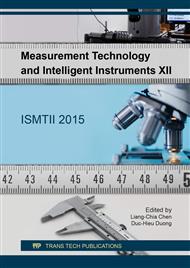p.418
p.427
p.432
p.439
p.447
p.453
p.459
p.465
p.470
New Performance Method of Capacity Effect from High to Low Level Lighting for DSC Device
Abstract:
With increasing applications in consumer electronics such as smart phones, laptops and tablet PCs, the need for pervasive computing with a requirement of lower power consumption is increasing every day. This opens the door for energy harvesting that could charge the batteries in these devices to keep them continually functioning in some useful state. There has been a lot of attention on flexible thin film solar cells, such as dye sensitized (DSC), organic and inorganic, given their low-cost and improving efficiency. Performance characterization DSC has been investigated, in order to clarify how to determine their performance accurately. Accurate characterization of DSC requires level lighting consideration on each very slow temporal response in the I-V curves of the DSC are clearly dependent on the voltage sweep direction, even when the sweep time is the order of seconds. Furthermore, the temporal response is dependent on different level lighting consideration. This analysis showed to improve accuracy, measurement should be real time removing capacitance effect with a Real-Time One-Sweep Method (RTOSM). Additionally, RTOSM will be useful to measuring cell performance more accurately and rapidly when evaluating solar cell performance.
Info:
Periodical:
Pages:
453-458
Citation:
Online since:
September 2017
Authors:
Price:
Сopyright:
© 2017 Trans Tech Publications Ltd. All Rights Reserved
Share:
Citation:


